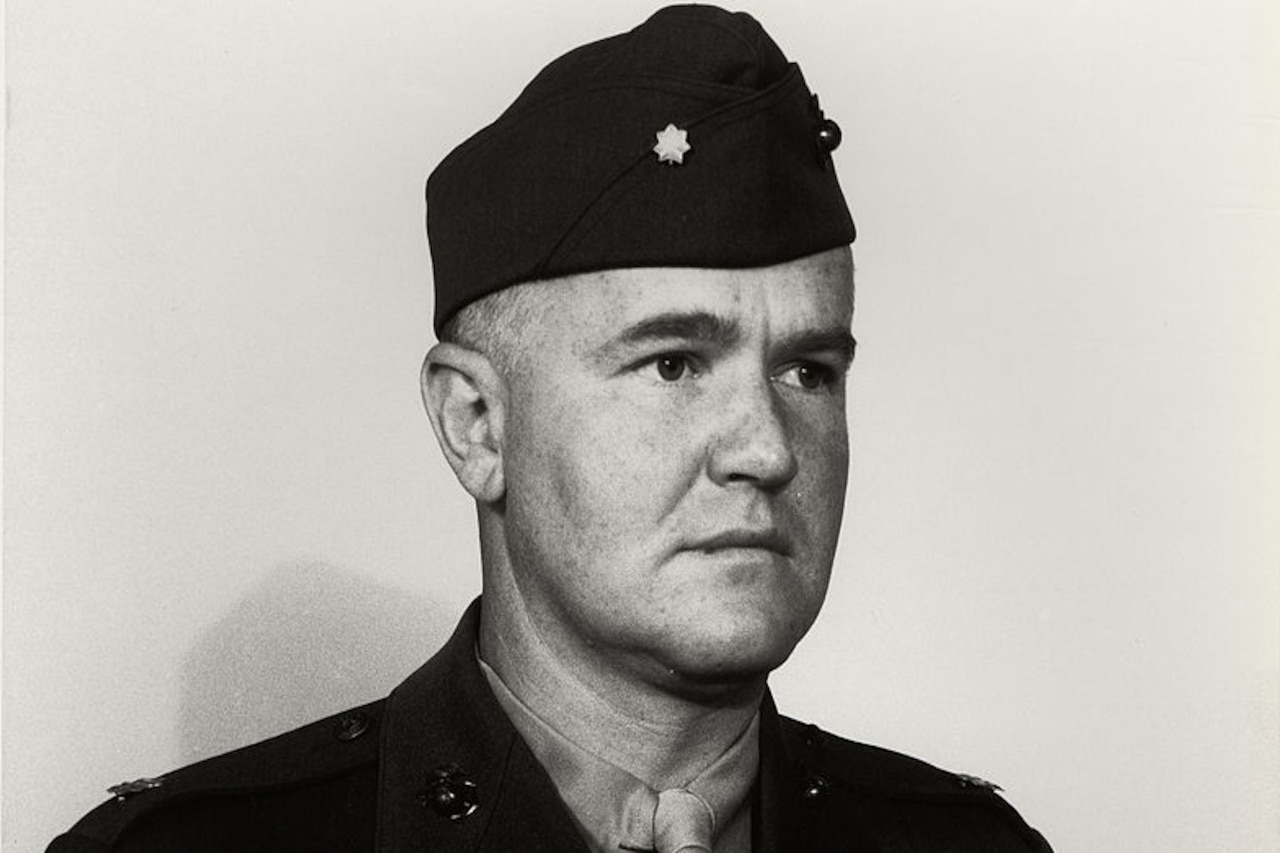
Many great military commanders lead by example, and Marine Corps Lt. Col. James Dyess was no different. During a battle for control of the Marshall Islands in World War II, he continuously put himself in front of enemy fire to direct his troops to success. He didn’t survive to see the fruits of his labor, but his valor and leadership earned him the Medal of Honor.
Dyess, who was known as Jimmie, was born Jan. 11, 1909 in Andersonville, Georgia. His parents and three siblings eventually moved to Augusta, where Dyess was active in the Boy Scouts. He attained the rank of Eagle Scout in his teens, going on to represent the Augusta area in 1926 during a Boy Scouts National Council event in Washington, D.C.
After high school, Dyess went to Clemson University, where he played football until an injury his junior year kept him from playing. He then switched his focus to the school’s ROTC rifle team, where he earned a reputation for being an excellent marksman. Dyess graduated from Clemson in 1931 with a bachelor’s degree in architecture and was commissioned into the Army Reserve. In 1936, he transferred to the Marine Corps Reserve, where he continued to hone his competitive marksmanship skills.
According to a 1944 Augusta Constitution article, Dyess operated the Augusta Lumber Company before going active-duty with the Marines in 1940, around the time when the U.S. began to build its troop levels up as war loomed in Europe.
Nicknamed “Big Red,” Dyess had reached the rank of lieutenant colonel by 1944 and was in command of the 1st Battalion, 24th Marines, 4th Marines Division, during the fight for the Marshall Islands.
On Feb. 1, 1944, he and his troops were involved in the Battle of Kwajalein, which took place from Kwajalein atoll in the south to Roi-Namur island in the north. They had finished their first day of combat when Dyess realized there were Marines caught behind enemy lines and were in danger of being overrun. Despite the looming darkness, Dyess gathered a small group of men to break through the enemy lines and rescue the stranded Marines.
The following day, Dyess and company were on Roi-Namur closing in on the last Japanese position. Facing heavy fire from the enemy, Dyess launched an aggressive attack, maneuvering troops and tanks inland. Dyess posted himself between his troops and the enemy so he could personally lead the attack by pointing out objectives and routes to get to them.
According to his citation, he was “constantly at the head of advance units, inspiring his men to push forward until the Japanese had been driven back to a small center of resistance and victory assured.”
Sadly, Dyess was standing along the edge of an anti tank trench, directing troops while attacking the few enemies who were left, when he was shot in the head by a burst of enemy machine gunfire. He died instantly.
His leadership and fighting spirit greatly helped rid the island chain of Japanese forces. Those attributes also earned him the Medal of Honor, which was officially announced on July 18, 1944. The medal was presented to his widow, Mrs. Connor Dyess, and their 8-year-old daughter at their Augusta home.
Dyess is the only man to have earned both the Medal of Honor and the Carnegie Medal, which he received in 1928 after rescuing two women off the South Carolina coast. The medals represent the highest honor for military and civilian heroism, respectively. Dyess is one of only a handful of Medal of Honor recipients to have also been an Eagle Scout.
In March 1944, shortly after Dyess’ death, the airfield on Roi-Namur was renamed Dyess Field in his honor. A year later, the USS Dyess was launched, with his widow sponsoring the ceremony.
In year’s past, the Boy Scouts of America and the Georgia Carolina Council held an annual Jimmie Dyess Days at Fort Gordon, just outside of Augusta. It was a chance for Boy Scouts to camp out on the installation and learn about the event’s namesake.
This article is part of a weekly series called “Medal of Honor Monday,” in which we highlight one of the more than 3,500 Medal of Honor recipients who have earned the U.S. military’s highest medal for valor.
